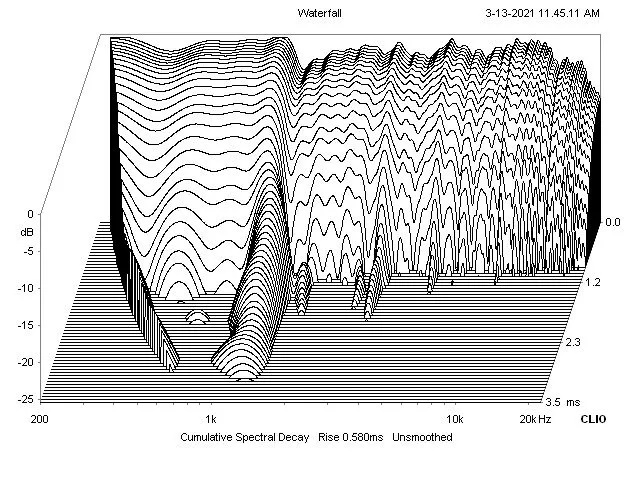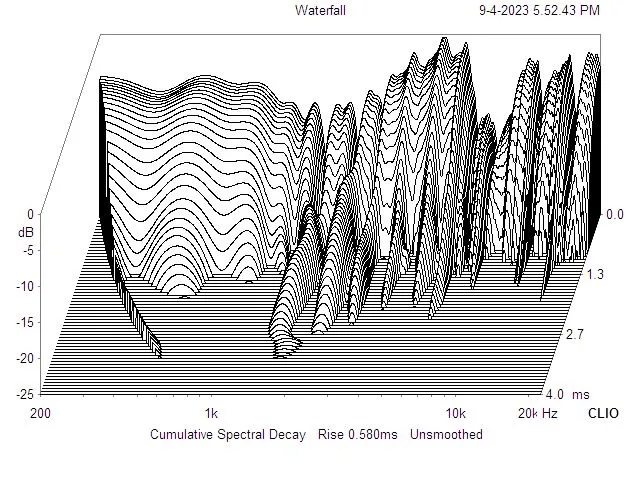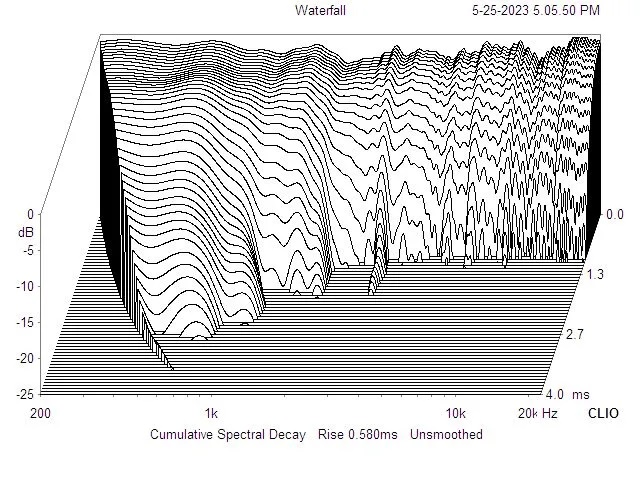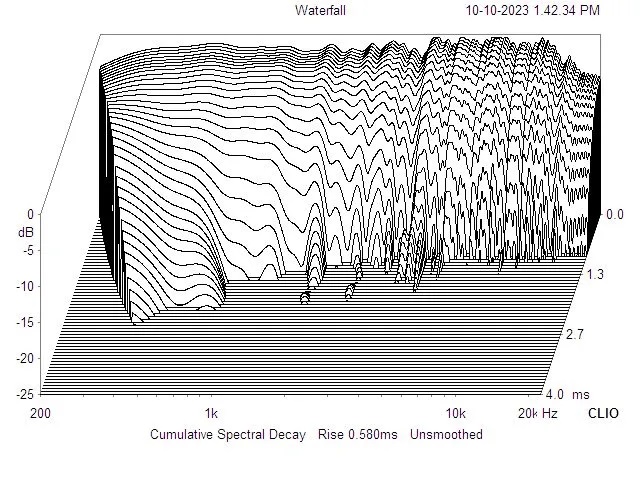Here is a great example of "ringing" or "stored energy" this example being the Dynaudio Special 40

That big, long trail around 1Khz is a resonance within the woofer, either from the cone itself, or the surround.
Here's a combination of phase issues, ringing and breakup happening all at once (Pioneer HPM100) where the mid driver is really stiff and full of resonances (the peaks &ridges that maintain their) output), and is allowed to play overtop the tweeter, creating all sorts of issues.

In the Monolith speakers, you can really see the delay in roll-off that heavy woofers can cause especially compared to how fast the dome tweeter and mid drivers are:

The left hand side of the graph sticks forward quite a bit further than the middle or treble frequencies as you look to the right side, which is an indication of fairly heavy moving mass, meaning the woofer isn't able to stop quite as quickly, but thankfully don't show any signs of ringing. But this can tell you how the midrange is going to sound, as it's a bit "sluggish" so the midrange might sound a little "heavy," lacking in speed, clarity or "texture".
(Similar things can be seen in 2-way speakers where a tweeter is paired with large woofers)
For comparison, here is the "Bully" with our T26 and a pair of M130s.

The M130s are a light weight woofer, so they stop faster than the heavier Monolith woofers.
The tiny little fingers that only show up at the bottom around 3-5KHz are indicative of small surface reflections, in this case, likely off the edges of the woofers on either side of the tweeter.
(Similar things can be seen in 2-way speakers with large woofers)